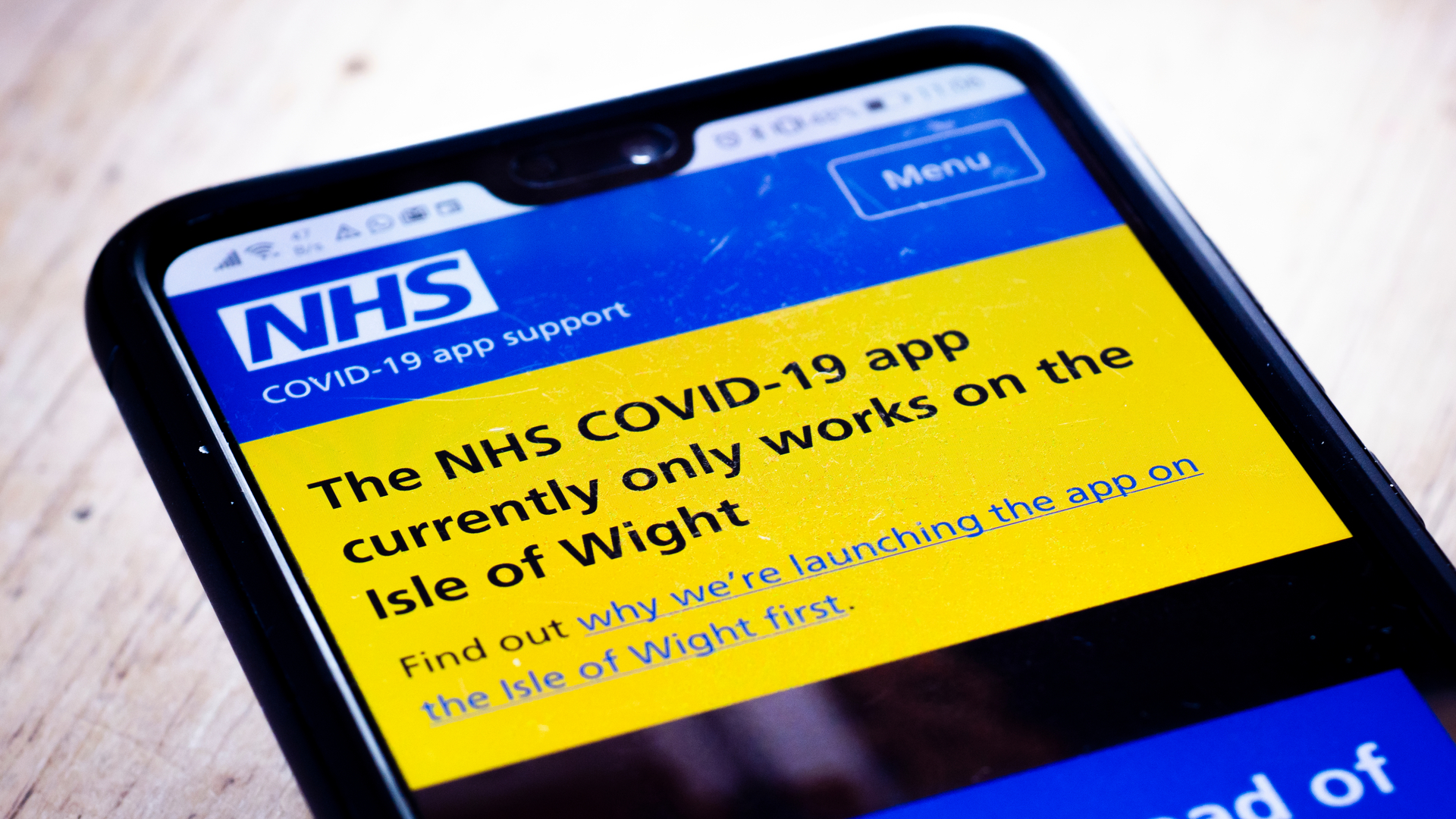Fears mount NHS innovation has been “sent packing to the basement”
With NHSX and NHS Digital folded into NHSE/I, experts question whether it’ll slow the delivery of new technologies or unleash a new era of fast-paced change

When the government in November folded NHSX and NHS Digital into an altogether new entity – branded NHS England and Improvement (NHSE/I) – the health secretary Sajid Javid proclaimed it would bring “digital transformation into the heart of the NHS”.
The two bodies coexisted for only a brief period, and held their own individual remits. NHS Digital – formed in 2013 – was the national provider of information, data and IT systems for health and social care in England. NHSX, meanwhile, created by Javid’s predecessor Matt Hancock, launched in early 2019 to set national policy and develop best practice for technology, digital and data across the NHS.
When NHSX was created, there were fears it would step on NHS Digital’s toes, with Little more than two years later, Javid has retired both to the surprise of many, with fears that digital transformation in the NHS has taken a backseat.
Order and chaos
Experts fear for the many thousands of employees involved, predicting bosses will seek to remove duplication of roles and responsibilities, while some question whether centralisation might stifle innovation and reduce visibility. Digital Health editor-in-chief Jon Hoeksma, too, reports one Trust CIO as saying there’s a sense that, despite its achievements, digital “has been demoted back to IT and sent packing back to the basement”.

Sajid Javid was appointed health secretary in June 2021
The move, however, has been welcomed in other quarters. NHS chief executive Amanda Pritchard, for instance, suggests this demonstrates digital will be central to transforming the NHS; helping to tackle an ongoing backlog of services with emerging technologies. Former director of digital development for NHSX and NHS England Sam Shah agrees, telling IT Pro reorganisations such as this constantly happen. Because NHSX was always part of NHS England, he adds, it’s more of a rebrand. For NHS Digital, which already shared an intrinsic relationship with NHS England, this connection is simply “a new format”.
Now the chief medical strategy officer at Numan, a digital healthcare company focused on men’s health, Shah explains: “Given they are all public sector agencies, what’s more important is this opportunity is used to set a strategy for the future and bring in capability and expertise that can lead technology change and transformation.”
Get the ITPro daily newsletter
Sign up today and you will receive a free copy of our Future Focus 2025 report - the leading guidance on AI, cybersecurity and other IT challenges as per 700+ senior executives
Short-term paralysis
Among the short-term downsides on the horizon is the potential for overall delivery to be slowed down while logistical decisions are being made over leadership roles, budgets, and priorities. “Given the proximity to the next election, inertia seems inevitable,” Shah fears.
“Hopefully, the changes mean a refreshed strategy can be set out, some historic interim roles can be advertised, new talent can be attracted, and once the new organisation is settled, there will be clarity of purpose around the role of the centre of the NHS in digital transformation.”
Pointing to NHS Digital’s ability to work at pace, alongside its razor-sharp focus in the last few years, Shah says this paved the way for “excellent products” like the NHS App. He admits, though, that NHSX hadn’t done “too well” on recruitment, adding its hiring policy gave the impression privilege affords the most senior tech jobs.
With COVID-19 hugely influencing shifting healthcare priorities, though, he suspects commitments and will slow down on some existing projects. Others, meanwhile, will be shelved, and budgets will be cut with delivery still expected.
“I do hope, this time, a more sensible approach is used, but history demonstrates that the process is rarely designed to prioritise the needs of the NHS,” he worries. “Where it can do even better is get more focussed on user research and improving user experiences. The national electronic referral system, for example, is still a chore for many users and that needs to change.”
Fostering public-private partnerships
Only last year, Qure.ai, a developer of AI technology for CT scans and chest x-rays, secured funding from NHSX to implement its technology with several NHS Trusts. CEO Prashant Warier praised its work, and that done by NHS Digital, as he describes the UK as “one of the hotbeds of healthcare innovation and large-scale adoption”. NHSX, for example, established the COVID-19 Chest Imaging Database (NCCID) in January last year, to use AI to help diagnose COVID-19 patients and create treatment plans. It also awarded £1.4 million to four AI projects in October 2021,
RELATED RESOURCE

Contrary to this move relegating innovation “to the basement”, he believes NHSE/I will continue to develop strategies for MedTech innovations. Qure, he adds, has great confidence the new body will drive innovation globally, especially given it’s reinforced with the expertise of both NHSX and NHS Digital.
The move could also be a chance to explore further opportunities with the private sector, suggests David Hancock, healthcare executive advisor at InterSystems and co-chair of INTEROpen. This organisation serves as a collaboration between individuals, the industry, standards organisations as well as health and social care providers, aiming to accelerate open standards for interoperability.

The NCCID comprises over 40,000 CT scans, MRIs and X-rays taken during the pandemic.
“There’s a need for clarity on the intentions concerning building new digital capabilities ifn-house versus buying solutions from external vendors,” he explains. “There are examples where building has perhaps not delivered the best results and, given the many advantages that buying could achieve, the NHS should consider the return-on-investment of buying versus building a central system.”
Digital transformation in the NHS, however, is way behind schedule, according to David Newell, head of health at professional services company Gemserv. He previously held NHS Trust Board responsibility for Information Technology, Clinical Audit and Medical Records. A fifth of Trusts in the NHS, for instance, still largely rely on paper, he says, leaving it “years behind the digital transformation of areas such as banking and travel”.
He believes, however, the NHS can make great strides if personalisation is made a top agenda item for digital transformation. “To make personalised, preventative healthcare a reality, the initiative must be clinically led at a national level, leveraging technology to enable system change,” he urges. “We need to pledge real, sustained investment with an absolute focus on measurable benefits delivery.”
The funding being directed into futureproofing IT systems, adds CTO of EMEA at Boomi, Mike Kiersey, is promising. He says: “If the NHS can efficiently modernise data practices in the coming months, it will be able to put a framework in place to become a digitally native system that can begin addressing the backlog of people waiting for crucial checks, tests and scans, and to help get waiting lists down.”
Overall, despite initial fears that digital innovation was to be relegated to an afterthought, there’s a collective welcoming for a move to fold NHSX and NHS Digital into NHSE/I. Professionals across health and technology, however, add the caveat that these lofty ambitions should be matched with the right budgets, the right talent, and the right timelines for health and social care IT modernisation.
Jonathan Weinberg is a freelance journalist and writer who specialises in technology and business, with a particular interest in the social and economic impact on the future of work and wider society. His passion is for telling stories that show how technology and digital improves our lives for the better, while keeping one eye on the emerging security and privacy dangers. A former national newspaper technology, gadgets and gaming editor for a decade, Jonathan has been bylined in national, consumer and trade publications across print and online, in the UK and the US.
-
 AI is helping bad bots take over the internet
AI is helping bad bots take over the internetNews Automated bot traffic has surpassed human activity for the first time in a decade, according to Imperva
By Bobby Hellard
-
 Two years on from its Series B round, Hack the Box is targeting further growth
Two years on from its Series B round, Hack the Box is targeting further growthNews Hack the Box has grown significantly in the last two years, and it shows no signs of slowing down
By Ross Kelly